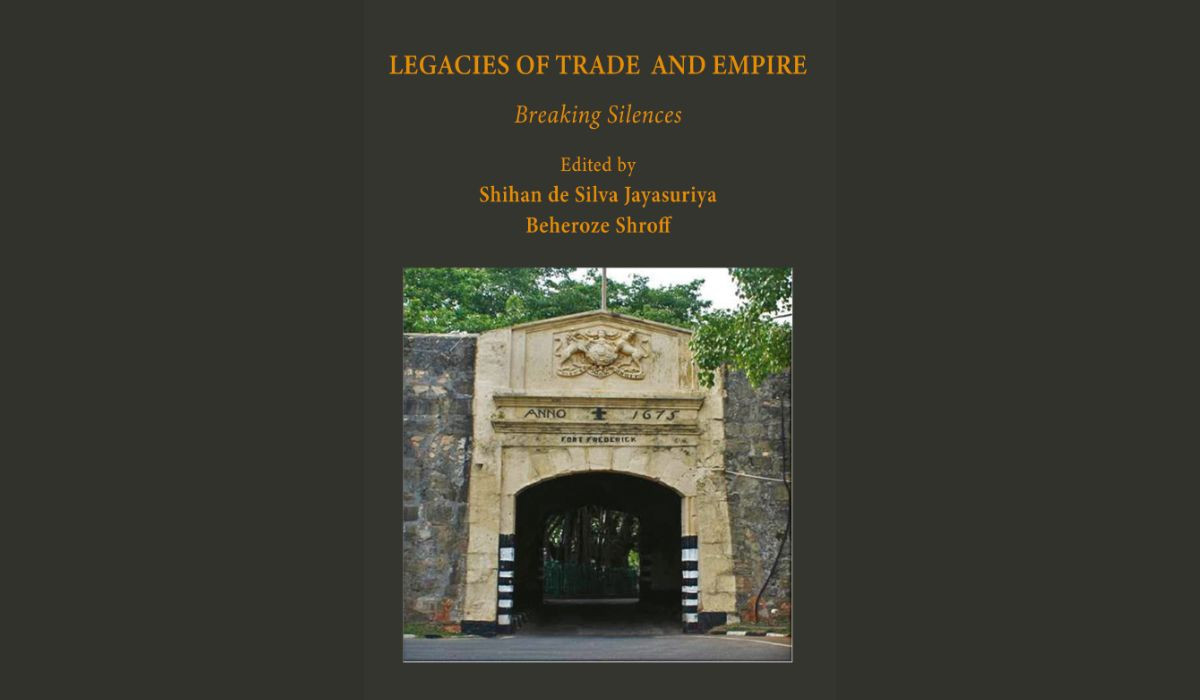Co-edited by Professor Shihan de Silva Jayasuriya, College Senior Associate, the book problematises established histories of slavery and indentured labour.
The book follows a conference Professor Shihan de Silva Jayasuriya convened two years ago at the Institute of Commonwealth Studies, University of London.
Shihan’s Introduction ‘On Legacies of Trade and Empire’ is followed by seven chapters. During her Visiting Fellowship at Lucy Cavendish College last year, Shihan accessed manuscripts at the University of Cambridge libraries which shaped her writings on The Village in the Jungle, a literary masterpiece by an alumni of Trinity College, Leonard Woolf, better known as “the husband of Virginia Woolf”.
“Being a Fellow of Lucy opened doors at other Colleges in the University, enriching my research and writings” says Shihan, reflecting back on her happy days in residence at Lucy.
Intercultural interactions and afterlives following European empires that began in the Early Modern Period are at the core of the book. Portuguese, Dutch, French and British legacies are grouped within three categories. In the first category “Creolisation and Créolité”, Professor Ute Fendler (University of Bayreuth, Germany) considers living together in contact zones. She searches through the Martiniquan philosopher Édouard Glissant’s Poetics of Relation and his concept of Tout Monde (‘All-World’). She also considers the concept of coral identity, a relationship based on symbiosis, with no hierarchy, put forward by Mauritian poet and writer Khal Thorabully. Dr Marie-Christine Parent (Montreal, Canada) writes about “Creole Music in the South-Western Indian Ocean Islands: The Case of the Sega-Moutya in the Seychelles”. Dr Parent analyses the development of Sega-Moutya, a popular music genre, through a Band called Fek Arive.
You can listen to their music below.
The next section - “Creativity in Diaspora” - includes three chapters. In “Not by the Cross Alone: Understanding the Role of Asia’s First Printing Press”, Dr Frederick Noronha (Goa) writes on the inadequately understood Press in Goa. The role of the Press extended beyond the religious, he argues, and could be seen as a fulcrum point of early knowledge exchange between Asia and Europe. The Press also promoted linguistic, geographical and botanical knowledge from Asia. Continuing on India, Chapter 4 concerns “Afterlives of Siddis in Karnataka: Assertion of Agency by Indians of African Descent”. Beheroze Shroff (University of California, Irvine) gives the Siddis a voice and makes them visible through the photographs of their habitats and their projects. An exemplary Siddi couple - Juliana and Juje - innovate and devise ways of helping their community. Dr Tom Hoogervorst (Royal Netherlands Institute of Southeast Asian and Caribbean Studies (KITLV)) shows how trade and empire-building give rise to diasporas, agents of cultural diffusion. He discusses the global culturescapes by identifying connections through linguistics and history in “Gastronomy under Duress: Connected ‘Indonesian’ Food Practices in Suriname, Sri Lanka and South Africa”.
“Epistemes of Empire”, the final theme, concerns the British empire which governed a quarter of the world’s population. The colonial continuum in language and literature is epitomised through Leonard Woolf’s The Village in the Jungle. Woolf’s mastery of Sinhala, Shihan argues, enabled him to enter the minds of the colonised and empathise with their powerlessness. Shihan had studied Baddegama (the Sinhala translation of The Village in the Jungle) during GCE O level days in Sri Lanka. She argues that the novel is an early call for decolonisation; colonisers trapped within the imperial machinery were not necessarily in favour of the empire. Finally, Dr Xin Li (University of Bayreuth) studies the Tobago-born Canadian M.N. Philip’s resistance to colonialism. In “Aesthetics of Silence in M.N. Philip’s Looking for Livingstone: An Odyssey of Silence”, Dr Li deconstructs an imaginary reconstruction of the famous English traveller and physician, Dr David Livingstone, by a woman of Afrodescent.




